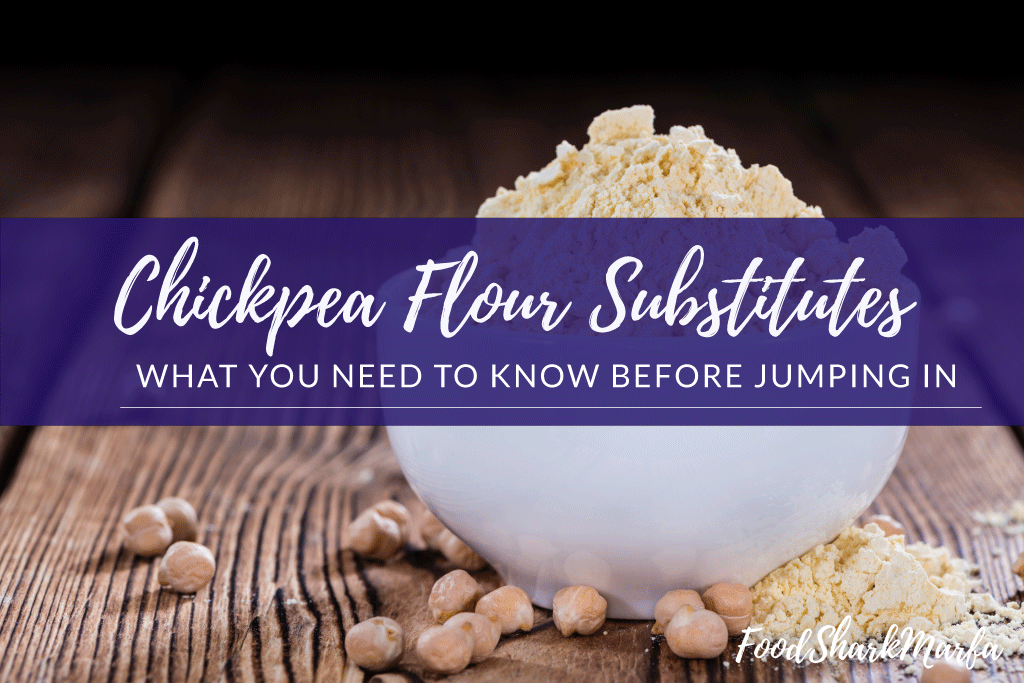There are dozens of flour varieties on the market, including a selection of gluten-free options. One such option that is slowly growing in popularity is chickpea flour, which has a large amount of protein and contains no gluten. This flour can be used as a healthy option for all sorts of different cooking styles, including baking and frying. If you can't find chickpea (also known as garbanzo bean) flour, don't worry. This list will help you pick a chickpea flour substitute that meets your needs.
What is chickpea flour?
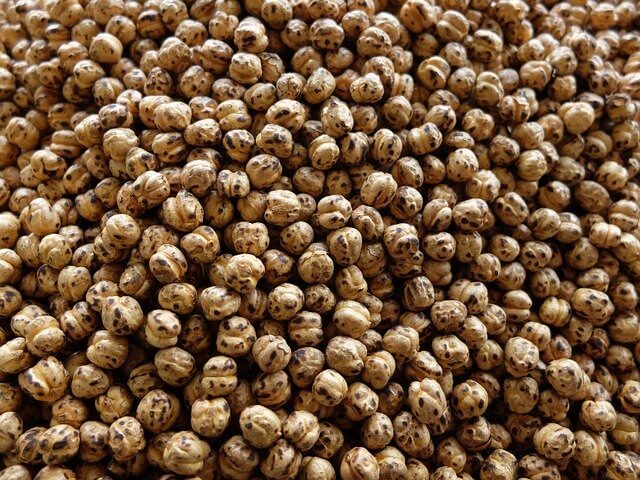
How healthy (or unhealthy) is it?
If you’re comparing chickpea flour to something like whole wheat flour, the former is going to be much more nutritious than the latter. Flour made of chickpea has fewer carbohydrates and calories while offering significantly more protein. You’ll also find that chickpea flour has little fat and comes with a reasonable amount of both potassium and calcium, both of which help you maintain a healthy diet.
Nutritional Breakdown
Chickpea flour | Amount (per 100 g) | % Recommended daily intake |
Calories | 400 kcal | 19% |
Total fat | 5 g | 8% |
Saturated fat | 0 g | 0% |
Carbohydrates | 70 g | 25% |
Cholesterol | 0 mg | 0% |
Salt | 0 mg | 0% |
Protein | 17 g | 33% |
Calcium | 107 mg | 11% |
Vitamin B-12 | 0 ug | 0% |
Potassium | 1220 mg | 30% |
What recipes use chickpea flour?
Chickpea flour tends to have a denser texture than other flours but can still provide a light batter when used for fried foods. The trick is adding delicious spices along with club soda for a mixture that is similar to tempura. However, there are many other recipes that can be made using chickpea flour, such as savory waffles and bread. It can also be used to thicken up individual dishes like soups, sauces, and similar foods.
Why do we need chickpea flour substitutes?
Since chickpea flour has only just started gaining popularity in the west, it may not be available at your local health food store and isn’t likely to be provided at a typical supermarket. This can make it difficult for some people to find and use, so a substitute can be a good alternative for recipes that recommend chickpea flour. Your preference in terms of flour that contains or doesn’t contain gluten, may or may not be vegan, and other dietary choices will all come into play when deciding which flour is right for your needs.
Note:
🌱 = vegan
1. Whole wheat flour 🌱
Best for: bread, pancakes, muffins, scones, and biscotti.
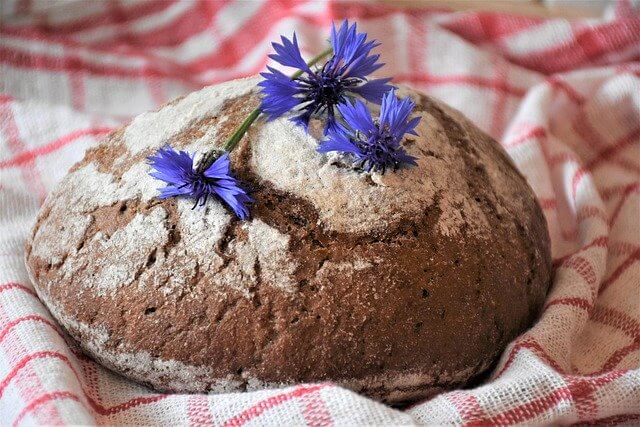
Overview
Whole wheat flour is made entirely out of wheat but comes in two different varieties. First, there is white whole wheat flour, which is made from winter wheat or white spring wheat. It has all the nutritional content of traditional whole wheat flour, but it is typically paler in color and has a milder flavor. Regular whole wheat flour comes from either winter wheat or hard red spring wheat. Unlike white whole wheat flour, this flour has a heartier texture and a nutty flavor.
Advantages
Whole wheat flour can be substituted for chickpea flour on a gram per gram basis, so there's no need to do extra calculations to create your favorite dishes. The reason for this is because both flours are fairly heavy. This is nuttier flavored wheat than all-purpose flour, and it also contains more nutrients than regular flour.
Disadvantages
The most significant downfall with whole wheat flour is that it contains gluten, so it is not going to be appropriate for those with celiac disease or others who prefer to avoid gluten. Since it’s rather heavy, it shouldn’t be used for more than 25% of a recipe for bread that uses yeast for leavening purposes, such as a loaf of sourdough bread. That means you will need to use another type of flour for the rest of the wheat requirement, which can get complicated in some situations. It may also mean you need additional ingredients in your cupboard, which can be a negative for some people.
Nutritional breakdown
Whole wheat flour | Amount (per 100 g) | % Recommended daily intake |
Calories | 333 kcal | 16% |
Total fat | 3 g | 5% |
Saturated fat | 0 g | 0% |
Carbohydrates | 73 g | 27% |
Cholesterol | 0 mg | 0% |
Salt | 0 mg | 0% |
Protein | 10 g | 20% |
Calcium | 0 mg | 0% |
Vitamin B-12 | 0 ug | 0% |
Potassium | 0 mg | 0% |
2. Quinoa flour🌱
Best for: pizza crusts, pie crusts, muffins, and pancakes.
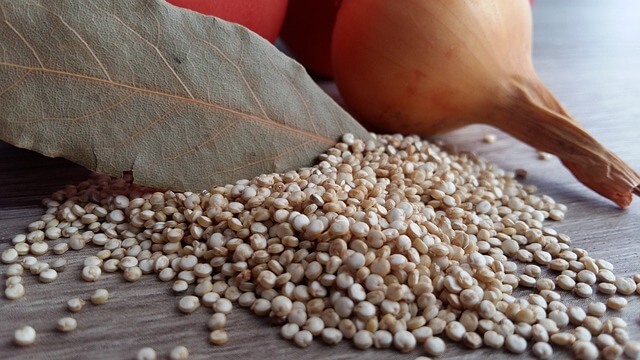
Overview
One of the most ancient grains that are still in use and popular today is quinoa. It is also increasingly common for use in gluten-free recipes, which makes it similar to chickpea flour. Some health food stores include a selection quinoa flours, but it can also be made on your own. All you need to do is grind up the quinoa until it’s the appropriate consistency. It can be substituted on a one to one basis when used as an alternative for chickpea flour.
Advantages
Being gluten-free is one of the reasons people appreciate quinoa flour, but that isn’t the extent of its benefits. This wheat is a complete protein, which means that it contains all of the essential amino acids that your body needs. The amount of carbohydrates in quinoa flour is similar to that of other flour, but it also adds in a bit of calcium to meet your recommended daily intake. It can also be used for many different recipes, including muffins, pizza crusts, pancakes, and as a thickener for soups and sauces.
Disadvantages
The truth is that you may have a difficult time finding quinoa flour, so if you aren’t open to making it on your own, another chickpea flour substitute might be a better option. There is also another problem where some people think that quinoa flour has a bitter taste compared to other flours used instead of chickpea flour.
Nutritional breakdown
Quinoa flour | Amount (per 100 g) | % Recommended daily intake |
Calories | 393 kcal | 19% |
Total fat | 5 g | 8% |
Saturated fat | 0 g | 0% |
Carbohydrates | 64 g | 23% |
Cholesterol | 0 mg | 0% |
Salt | 29 mg | 2% |
Protein | 14 g | 27% |
Calcium | 36 mg | 4% |
Vitamin B-12 | 0 ug | 0% |
Potassium | 0 mg | 0% |
3. Millet flour 🌱
Best for: biscuits, cakes, pancakes, waffles, and flatbreads.
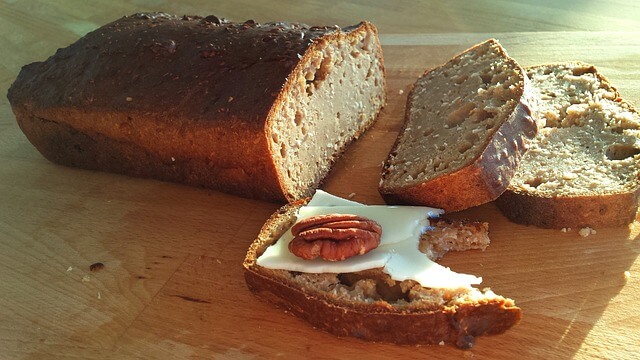
Overview
Just like flour made from quinoa, millet flour is also made from an ancient grain that has been around for ages. Millet is a coarse grain that is best known for including large amounts of minerals, vitamins, fiber, and protein. This is another gluten-free grain that can be used in a wide variety of dishes such as salad, muffins, breakfast porridge, and as a substitute for potatoes or rice.
Advantages
Millet flour is rich in nutrients and contains reasonable amounts of magnesium, manganese, phosphorus, and copper. It also includes an assortment of antioxidants such as ellagic acid and curcumin, which aid in maintaining and improving your general health. The dietary fiber in this ingredient also helps to reduce harmful cholesterol. Due to its unique taste, it tends to work well for desserts and other dishes where chickpea flour may not be the right choice.
Disadvantages
While many of these flours offer the full assortment of amino acids, millet flour has only two of them. It also has a different flavor and texture than chickpea flour, and many people say it is more similar to corn. It is also sweeter, which means that it may not work in all recipes if you prefer more savory dishes.
Nutritional breakdown
Millet flour | Amount (per 100 g) | % Recommended daily intake |
Calories | 382 kcal | 18% |
Total fat | 4 g | 7% |
Saturated fat | 0.5 g | 4% |
Carbohydrates | 75 g | 27% |
Cholesterol | 0 mg | 0% |
Salt | 4 mg | 0.2% |
Protein | 11 g | 22% |
Calcium | 14 mg | 1% |
Vitamin B-12 | 0 ug | 0% |
Potassium | 224 mg | 5% |
4. Cassava flour🌱
Best for: tortillas, cake, tacos, fries, and burgers.
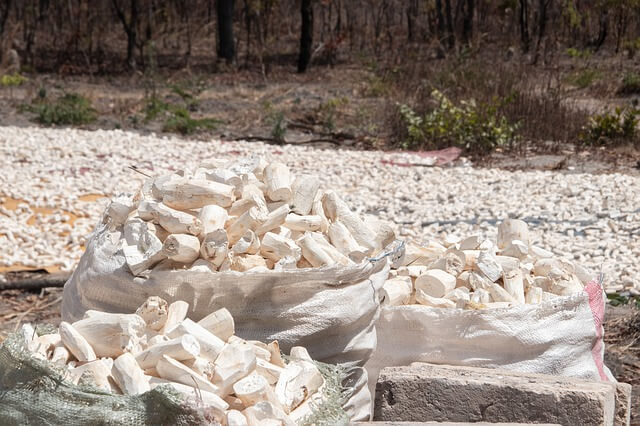
Overview
Cassava is a root vegetable, also called yuca, that comes from South America and is similar to other starchy vegetables like beets, carrots, and parsnips. The cassava made from this vegetable is primarily composed of carbohydrates, but it also includes several minerals and vitamins. Many flours made of cassava are vegan and free of grain, gluten, and nuts. This makes them an excellent chickpea substitute for those with food allergies.
Advantages
One of the things that distinguish cassava flour from the rest is that it is white, has a wonderful texture, and offers a neutral taste. That means it can be used for sweet breakfasts and desserts when you cannot eat wheat or other types of grains. It is also a fantastic source of both manganese and vitamin C. It can also work as a thickener due to the texture of the flour.
Disadvantages
Keep in mind that many cassava foods can have additives, so it’s essential to read the label if you aren't making it on your own. Items like oil or coconut flour can raise saturated fat and be unhealthy to eat regularly. This flour also has a large amount of carbs, so it is recommended that it only be eaten in moderation so you don't go over your daily recommended intake.
Nutritional breakdown
Cassava flour | Amount (per 100 g) | % Recommended daily intake |
Calories | 371 kcal | 18% |
Total fat | 0 g | 0% |
Saturated fat | 0 g | 0% |
Cholesterol | 0 mg | 0% |
Salt | 0 mg | 0% |
Calcium | 57 mg | 6% |
Potassium | 303 mg | 7% |
Carbohydrates | 89 g | 32% |
Fiber | 6 g | 21% |
Sugars | 0 g | 0% |
The Bottom Line
Chickpea flour can be an exceptional choice if you’re someone who wants to enjoy baked goods without consuming gluten. However, it’s not always easy to find, so you may not always have it at hand when you decide to do some cooking or baking. That’s why knowing some substitutes for this flour can be handy, so you’re ready to go even if you run out of chickpea flour. The four substitutions we list above are some of the options you have that can ensure a recipe is made whenever you want.
Top vegan picks
When looking at the chickpea substitutes above, you might notice that all come in vegan versions. Most of them are also gluten-free, so they work well for diets of all sorts. As far as the best vegan choice when you don’t have chickpea flour, quinoa flour is one of the top options. It contains ingredients that contain many nutrients, including vitamins and minerals, so you can stay healthy while enjoying your favorite meals. Millet flour and cassava flour can also work well but may be harder to find.
Top healthy picks
For those who are most concerned with the health benefits of a substitute for chickpea flour, you can't go wrong with millet flour. It offers many antioxidants along with vitamins and minerals in large portions to keep you healthy. Quinoa flour also has a variety of vitamins and minerals that will fill out your diet. Keep in mind that all flours tend to be rather high in carbs, but the substitute with the least is quinoa flour.
Top convenient picks
Convenience is something that cannot be ignored, especially when you want to make a recipe quickly and don’t have time to spend hours searching for one of the ingredients (or preparing it). Many of the options on this list are available in the majority of health food stores, but you’ll have to explore your own to find out which those are. If you want the best bet for convenience, whole wheat flour can be found online or at supermarkets and will work for most people’s needs.
Top convincing picks
If you don’t have chickpea flour and aren’t confident about making it on your own, the new most convincing choice is quinoa flour. It’s gluten-free, a complete protein, and has a flavor similar to chickpea flour. It can also be used in the same amounts, which makes it the most convenient chickpea flour substitute you can get.
Sources:
https://oureverydaylife.com/substitutes-garbanzo-bean-flour-40055.html
https://www.cookinglight.com/cooking-101/essential-ingredients/what-is-chickpea-flour
https://www.tarladalal.com/glossary-quinoa-flour-2506i
https://www.simplyquinoa.com/how-to-use-quinoa-flour/
https://blog.getgrowfit.com/millets-diet-pros-and-cons/
https://www.goodhousekeeping.com/health/diet-nutrition/a19600044/cassava-flour/
